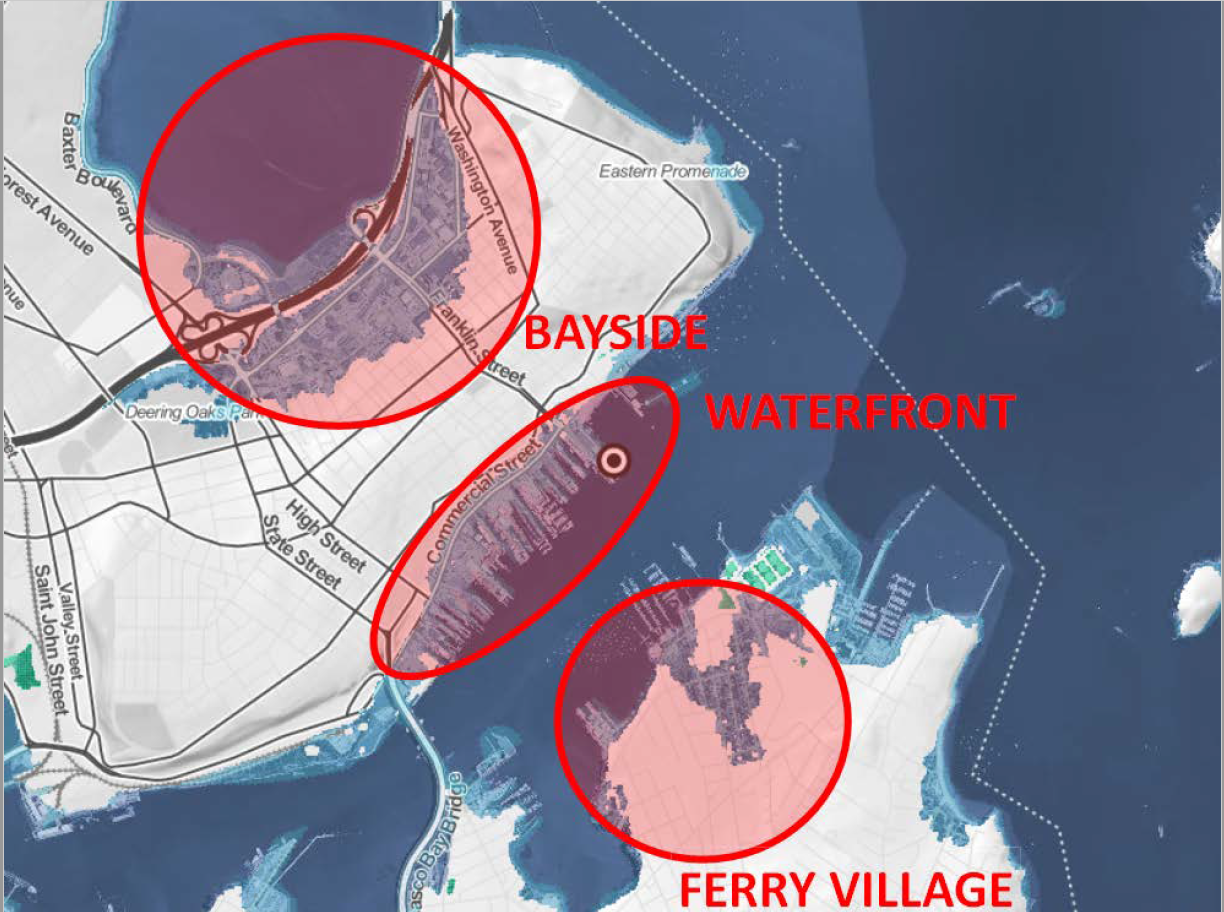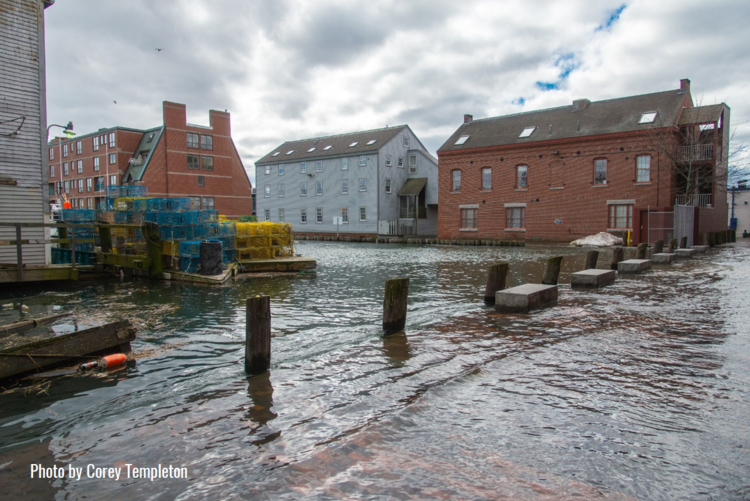Preparing Historic Resources for Climate Change
Nominated to Places in Peril in 2019
The Issue
Rising seas and coastal flooding present a threat to cultural resources in historic coastal communities. Planning for the future, preservationists need to make tough decisions about what will be lost, what can be saved, and how historic preservation can contribute to making our places more sustainable.
Greater Portland is at considerable risk according to sea level rise projections. Though difficult to quantify exact damage, the probability is high that rising seas and storm surges to coastal areas will do irrevocable damage to coastal homes and businesses as has already been seen in other states and in places like Camp Ellis in Saco. Communities such as Higgins Beach, Pine Point, Prouts Neck, and Portland’s Bayside and Stroudwater neighborhoods as well as the Portland waterfront will be severely impacted by seal level rise and storm surges. Bayside and the waterfront have already seen the damage that can result from a king tide flood and there is evidence pointing to more of these storm surges in the near future. The cottages of Higgins Beach and the 1897 Oceanside Hotel are in the area’s projected flood zone. Elsewhere in Scarborough, Prouts Neck is anticipated to become an island community, as Black Point Road would become underwater and homes like that of Winslow Homer could be threatened by storm surges. Areas along the Spurwink, Nonesuch, Libby, Scarborough, and Fore Rivers would see substantial loss of property due to the expansion of the rivers.
Many of Greater Portland’s most treasured prehistoric and historic sites sit along the coast and its intersecting rivers and streams—areas at high risk because of rising sea levels. These sites include historic seaside communities, residential neighborhoods, wharves, forts, lighthouses and 2,000 documented shell middens that contain valuable information and prehistoric cultural artifacts. The waterfront in the greater Portland region has been inhabited for thousands of years, and through the development of natural and maritime resource economies, people have dramatically shaped its geography. Infill projects in Portland expanded the peninsula on the north and south to accommodate rail service and industrial uses in the 19th century. In South Portland, Ferry Village’s mud flats were filled during World War II for the construction of massive shipyards.
Threat
Greater Portland communities are already experiencing recurrent flooding, erosion and increasingly intense storms—threats that are projected to increase as the Gulf of Maine warms and expands. The continued damage and destruction of local historic landmarks and sites could be detrimental to Greater Portland’s personality and sense of collective history. The loss of archaeological sites would be both academically and culturally devastating. Information about Maine’s prehistory and early colonialism could wash away, and Indigenous communities lose more fragments of their ancestors’ landscapes. If this occurs, Greater Portland will face substantial revenue losses because our regional economy depends so heavily on historic districts, properties, and parks to attract tourism, new residents, and new businesses.
Our Position
We know that our historic buildings, archaeological resources, and communities are at risk, but many disagree on where to go from there. While we consider how to preserve our built and cultural landscapes, we must weigh our desire for authenticity against our need for survival in the face of climate change impacts. How should preservation evolve in light of our changing climate and landscape? Greater Portland Landmarks will work to document resources at risk, educate potentially impacted communities and property owners on best practices in hazard mitigation for historic resources, and assist with local efforts to increase the region’s resiliency to climate change.
As concerns about climate change mount, historic preservation and the conservation of existing resources are key to developing a strategy of resiliency, risk management and adaptation. Through collaboration and broad public engagement, we will raise awareness of the issue and work together with key partners to develop proactive and sustainable solutions. Landmarks’ goal over the next year is to develop a Climate Change Impact overview report and analysis to explore solutions that mitigate these risks. While climate change cannot be reversed, much can be done to protect our communities, and we look forward to devising creative solutions to mitigate threats and protect endangered landmarks.
Press
Portland and South Portland pledge partnership to combat climate change Portland Press Herald
Portland, South Portland Plan to fight Climate Change Portland Press Herald
Portland posts signs pointing to climate change impacts The Forecaster
Our View: Climate Council would guide necessary changes Portland Press Herald
New Warnings Accompany Hurricane Season Bangor Daily News
Living in Harm’s Way: Why Most Flood Risk is Not Disclosed Maine Public
Quick Links
What You Can Do
Join our mailing list to stay informed about advocacy, educational programs, and upcoming events.
Support the advocacy efforts of Greater Portland Landmarks.


